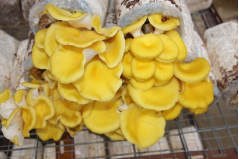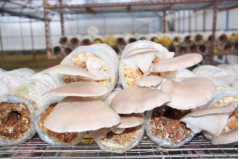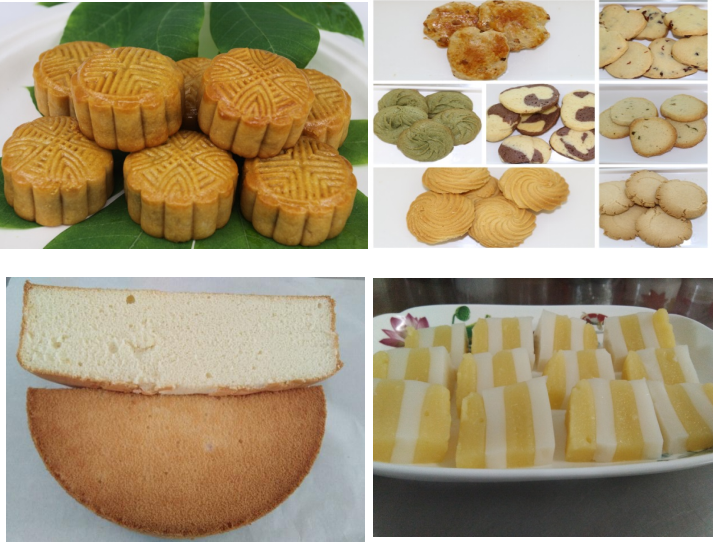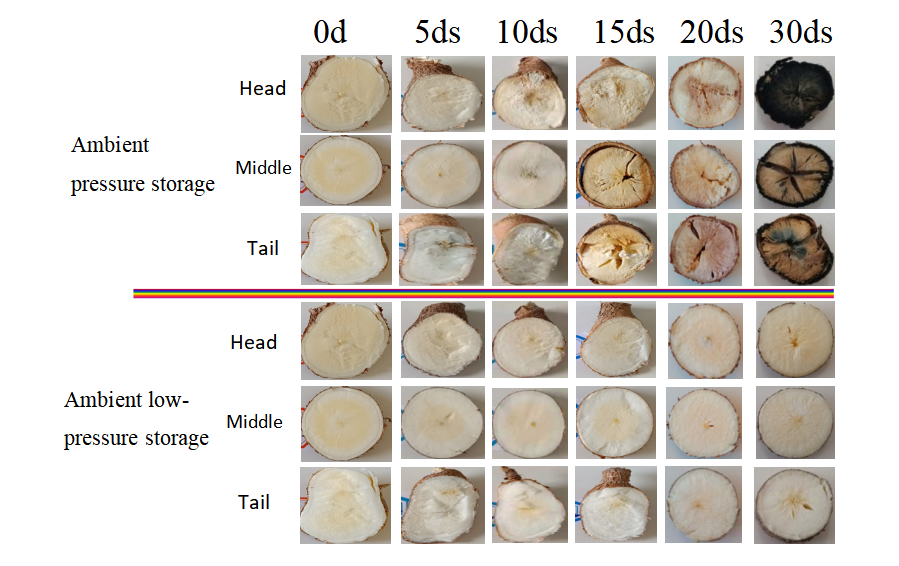I. Technology for Cultivating Edible Fungi Using Cassava Stems
1) Technology Introduction
Cassava stems contain 5.1% crude protein, 23.3% crude fiber, and 45.5% non-nitrogen extract, making them excellent material for cultivating edible fungi. By mixing cassava stems and sawdust at a certain ratio, fungi bags are prepared, and humidity is managed by spray banding. Research has shown that using cassava stems as a cultivation substrate is suitable for most known edible fungi, such as oyster mushrooms, elm yellow mushrooms and wood ear mushrooms.
2) Process Flow
The process of cultivating edible fungi with the utilization of cassava stem-based material includes stem crushing, mixing, bagging, sterilization, inoculation, cultivation, mushroom production, and harvesting. The specific process is as follows:

Pic 1. Cassava stem-Based material utilization for cultivating edible fungi process


Pic 2. Elm yellow mushrooms Pic 3. Oyster mushrooms
II. Cassava Flour Food Processing Technology
Cassava flour is made from cassava tuberous roots by processing techniques such as peeling, slicing (sticks), drying, crushing, sieving, and packaging. This flour product retains the original nutritional content of the cassava tuberous roots. It is gluten-free with a protein content of about 2%, but it has a high viscosity. It is a pure natural low-gluten flour, suitable for making cakes, biscuits, and other non-elastic pastries with a unique flavor. Based on this, a series of 128 special characteristic products have been developed.

Pic 4. Cassava series characteristic food
III. Post-harvest Preservation Technology for Cassava Tubers
Cassava tubers are prone to post-harvest rot within 24-72 hours of harvesting, which shortens the shelf life and severely affects the economic benefits of cassava. After years of continuous research, our team has developed a low-pressure storage technology that can prevent browning and rotting of cassava tubers for 60 days post-harvest, with minimal quality changes. This significantly retains the original flavor of the tubers, providing an important guarantee for downstream processing and product marketing.


For more information, please contact WFP China COE (wfpcn.coe@wfp.org)
Category
Cassava Processing Technology
Contributor
Cassava Processing Technology
Country
Technical Solution

